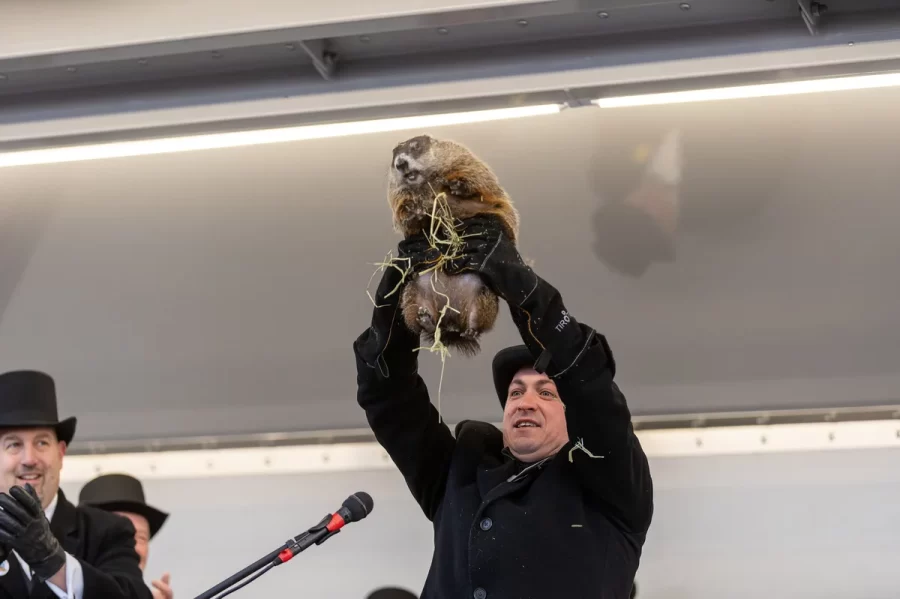The History of Groundhog Day
February 24, 2022
The first Groundhog Day was celebrated in Punxsutawney, Pennsylvania on February 2, 1887. This originated from a Christian tradition called Candlemas. Candlemas is when a priest would bless and give out candles, which people needed in order to keep warm in the winter. They used the candles to symbolize what the length and severity of the winter season would be. In Germany, people put their own spin on this idea by using a hedgehog to predict these things. Then, when the Germans came to Pennsylvania, they kept with the practice. But, they needed to change the hedgehog to a groundhog because there were a lot of groundhogs in the area. Since a groundhog can not really predict the weather, they said that if the groundhog sees its shadow, it means there will be six more weeks of winter, and if it does not see a shadow, spring will come early that year.
Many cities have their own groundhog to help predict the weather. The most famous is Punxsutawney Phil, likely because he is from the town that this holiday started in. There are other famous groundhogs, including General Beauregard Lee from Jackson, Georgia, Staten Island Chuck, Chuckles IX from Connecticut, and Chattanooga Chuck from Tennessee. This year, Milltown Mel from Milltown, New Jersey died before he could make the prediction. His handlers tried to find a replacement for the holiday, but could not do so because the other groundhogs were hibernating. Now, they are looking for his successor for next year. Some towns honor their groundhogs by having big celebrations for Groundhog Day, while others are content with less festivities. Either way, everyone is excited to find out what the groundhog says is in store for the rest of the season.

